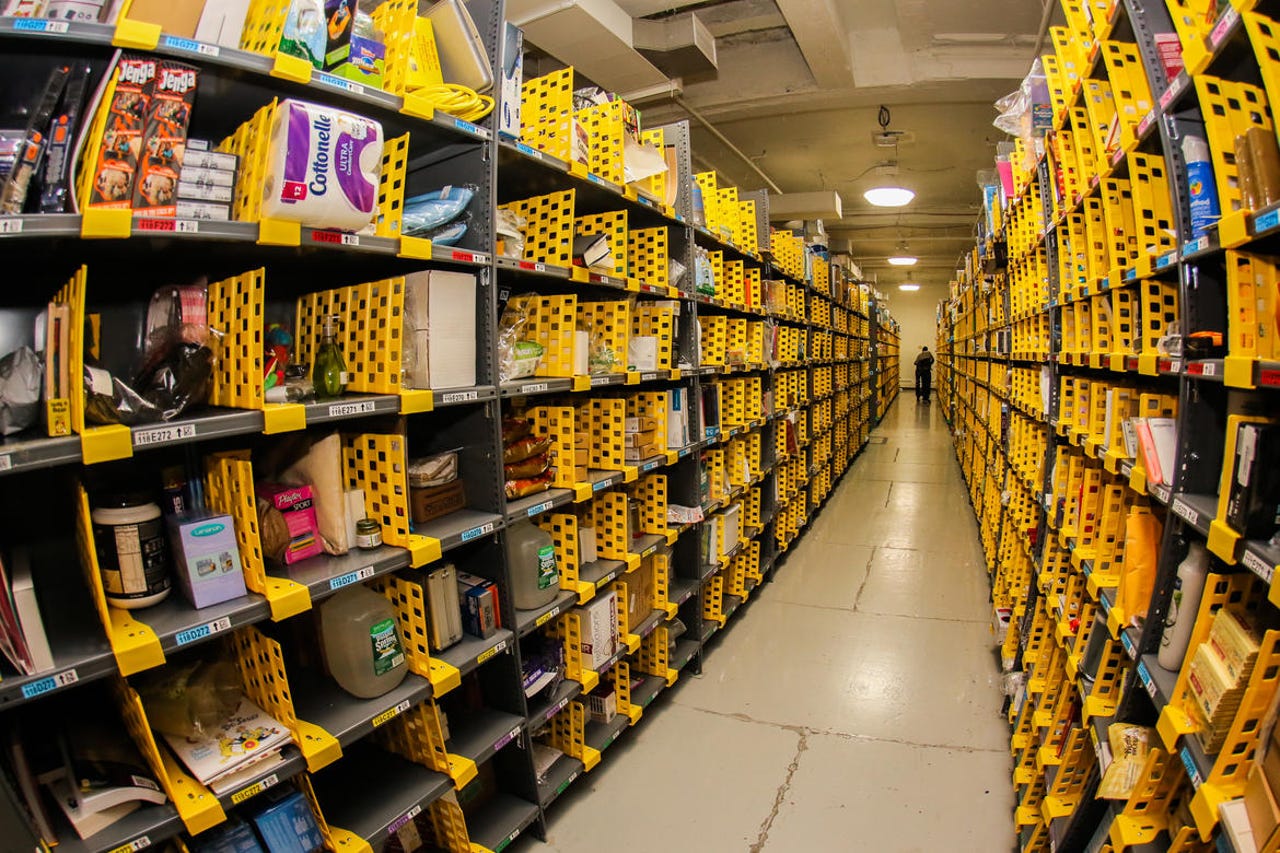Why Amazon is the king of innovation: Online retail mastery


Amazon Prime Now: A peek inside the Manhattan warehouse. Image: Sarah Tew/CNET
From its humble beginnings as the "World's Largest Bookstore," Amazon has gone on to dominate many segments of retailing, to the extent that it has helped cause the demise of a number of brick-and-mortar chains. Love it or hate it, Amazon has had a huge impact on all our lives.
Whether or not retail is doing well is really a matter of perspective. If you're Apple, with per-square-foot revenue more than double any other retailer, you're doing well. If you're Walmart, with a seemingly small one percent growth in the last quarter topping most other retailers, you're also doing well.
But if you're just about any other retailer, particularly old stalwarts like Sears and Kmart, the writing is on the wall. Stores are closing. Remember Borders? Circuit City? Sports Authority? All gone.
Many malls have closed. Some companies are taking all that space and trying to turn the carcasses of old malls into data centers. Office supply retailer Staples is trying to hold back the bleeding by renting out office space within its stores.
You can't just blame Amazon for retail's demise. The bad economy from the Great Recession did its part, as did incomprehensibly bad decisions on the part of store management or incomprehensibly bad management on the part of store owners.
One side effect of the recession was that stores were less profitable. It's no coincidence that Amazon showed astounding growth at the very same time brick-and-mortar retailers were failing.
To cut costs, many physical retailers reduced their overall selection and the amount of inventory they carried. From a generally accepted accounting principles point of view, reducing inventory is a valid choice. But consumers also want choice. When they can't find what they want in local retailers, they turn to online suppliers like Amazon.
When you compare Amazon to Walmart, there are some astounding statistics. According to a chart in Business Insider, Walmart carries about 4.2 million different products. That certainly seems like a lot. Amazon offers 250 million products, 52 million of which are books. That's a 60-to-1 ratio in favor of Amazon.
As the following chart from Statista shows, Amazon dominates online retailing to the point that its sales volume nearly doubles the next three contenders, combined.
This is Amazon's core competency, and innovations abound. From the patent on 1-Click ordering (which Amazon licensed to Apple), to Amazon's extended marketplace of individual resellers, to the warehousing and fulfillment services it offers to its reselling partners, to its very accommodating returns policy, to Prime itself, Amazon has constantly innovated both horizontally (across product areas and business policies) and vertically (over supply chain and distribution).
While some of the company's projects (like its Dash buttons for reordering, and its drone delivery concept) seem like gimmicks or publicity-seeking gambits, it's clear Amazon is continuing to experiment and innovate on a nearly constant basis. It will apparently both literally (see Dash button) and figuratively throw any good idea against the wall to see if it sticks.
What makes Amazon unique is that the company has never been content to "stay in its lane." The company began as an online retailer and is now a (perhaps the) powerhouse in cloud computing operations. The company that decided online book sales make sense because books are easy to ship is now willing to ship giant TVs and incredibly heavy construction gear for free -- as long as you're a paying member of its loyalty program.
At the core of Amazon's innovation strategy has been one amazing accomplishment: it's been able to extend itself without spreading itself too thin. None of Amazon's offerings have diluted the company's overall quality or made it weaker. Instead, Amazon has found ways to build vertical integration into every aspect of its infrastructure -- and then sell its own vertical integration as a service for others to build upon.
As you look forward and examine how your company can innovate, keep Amazon's lessons in mind. But keep one more thing in mind as well: Amazon is constantly innovating, and on so many fronts, it may be coming for you next.
See also:
- Why Amazon is the king of innovation: Kindle's clout
- Why Amazon is the king of innovation: Prime power
- Why Amazon is the king of innovation: Advantage, Alexa
- Why Amazon is the king of innovation: AWS, a cloud above the rest
By the way, I'm doing more updates on Twitter and Facebook than ever before. Be sure to follow me on Twitter at @DavidGewirtz and on Facebook at Facebook.com/DavidGewirtz.
